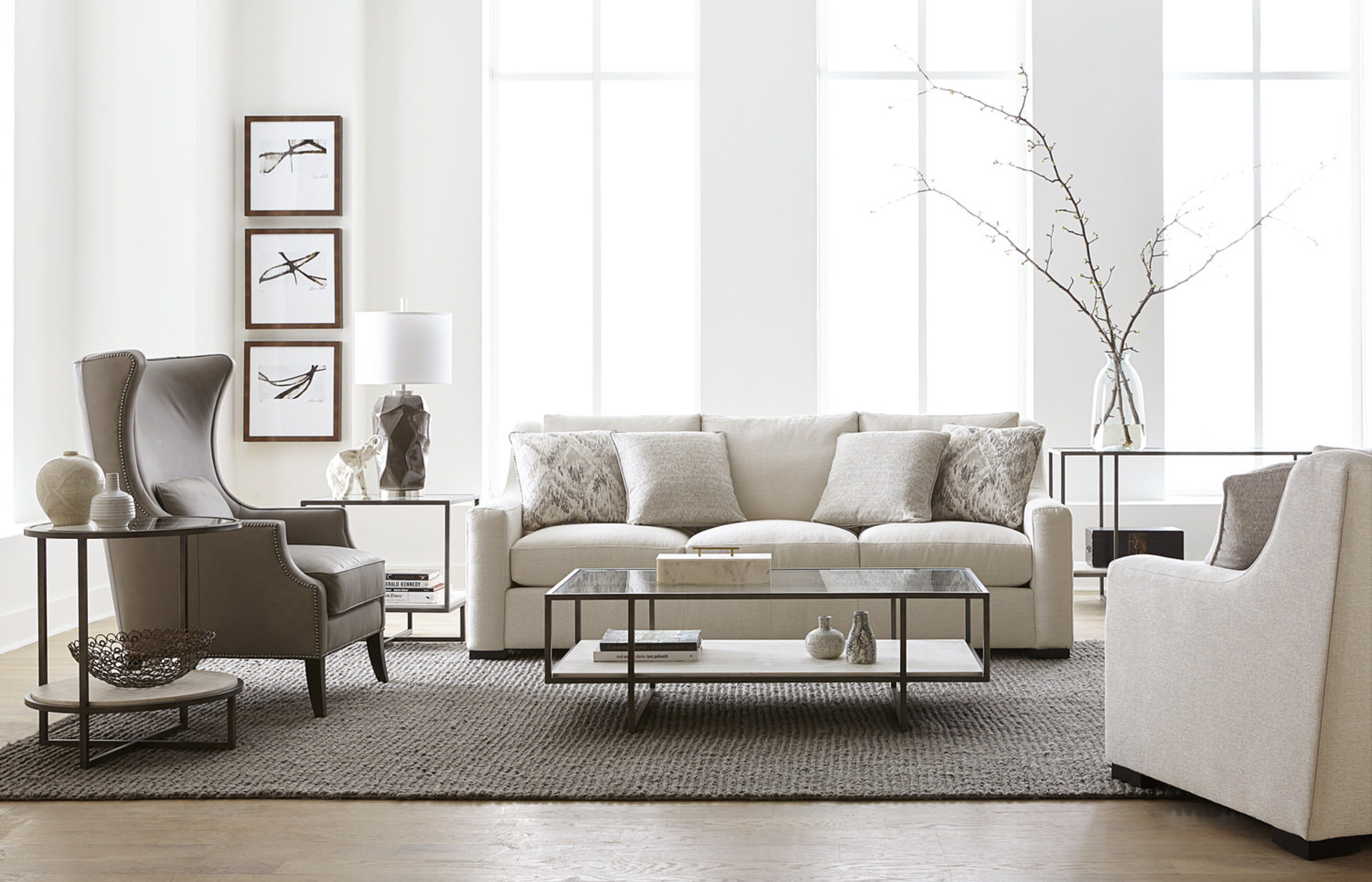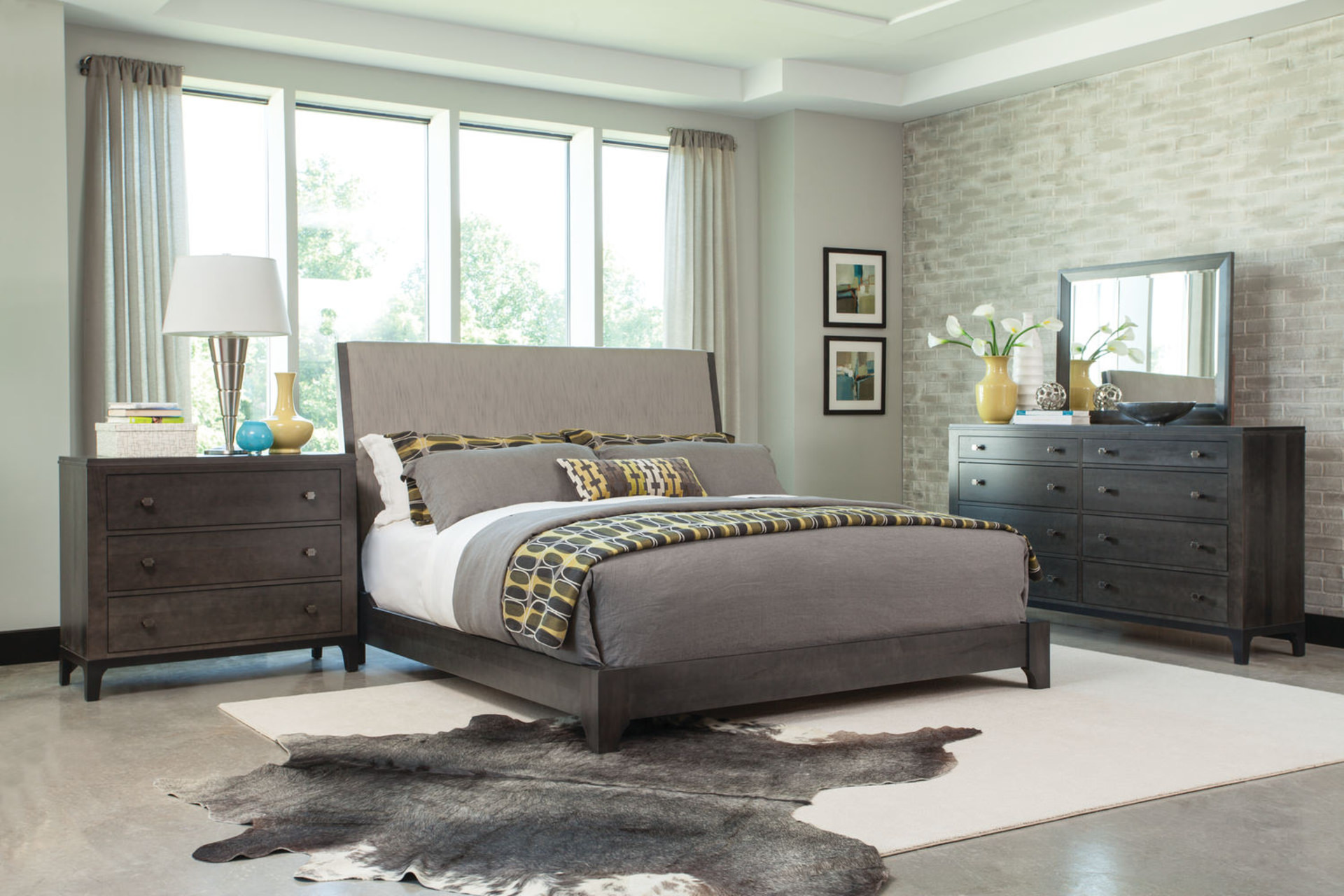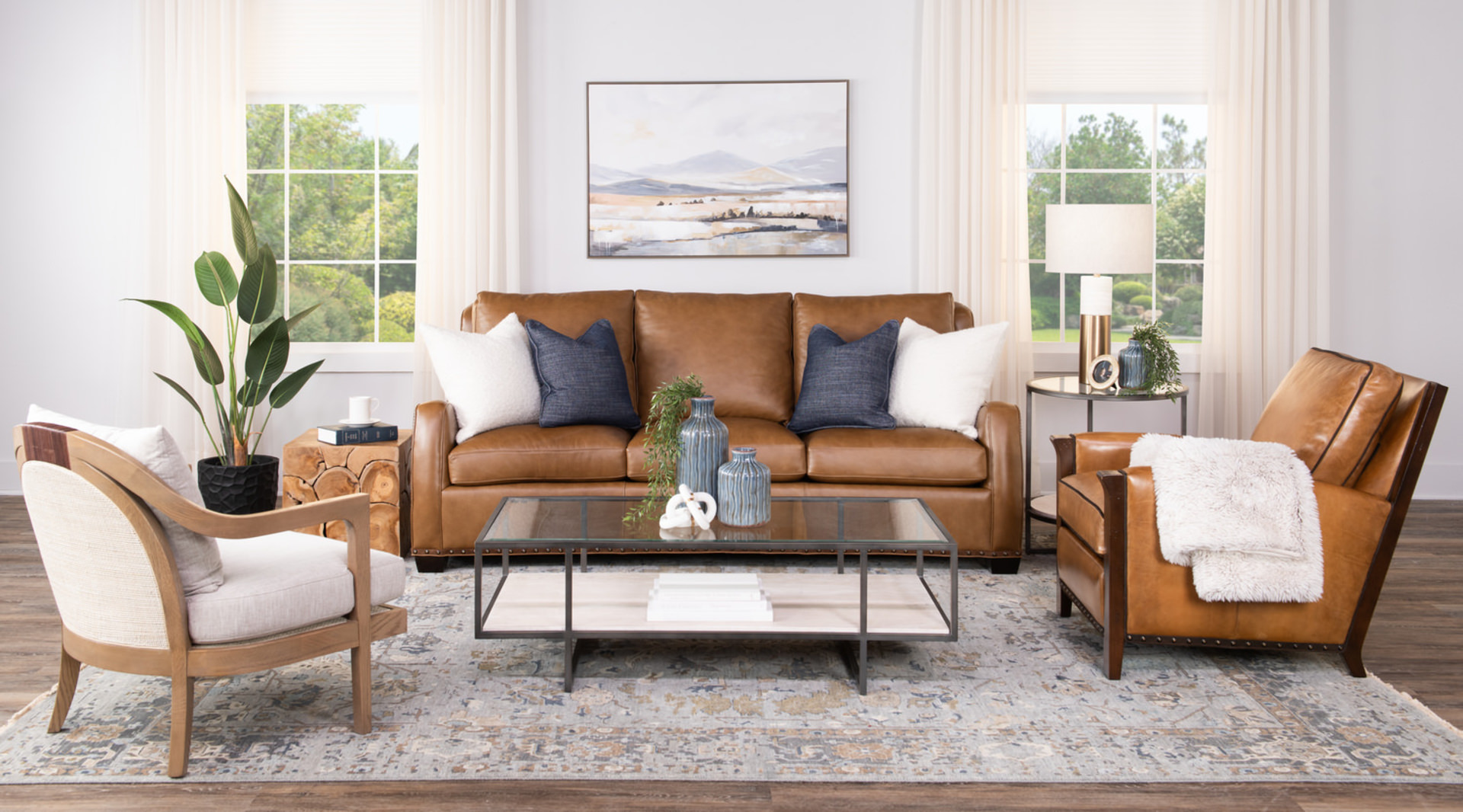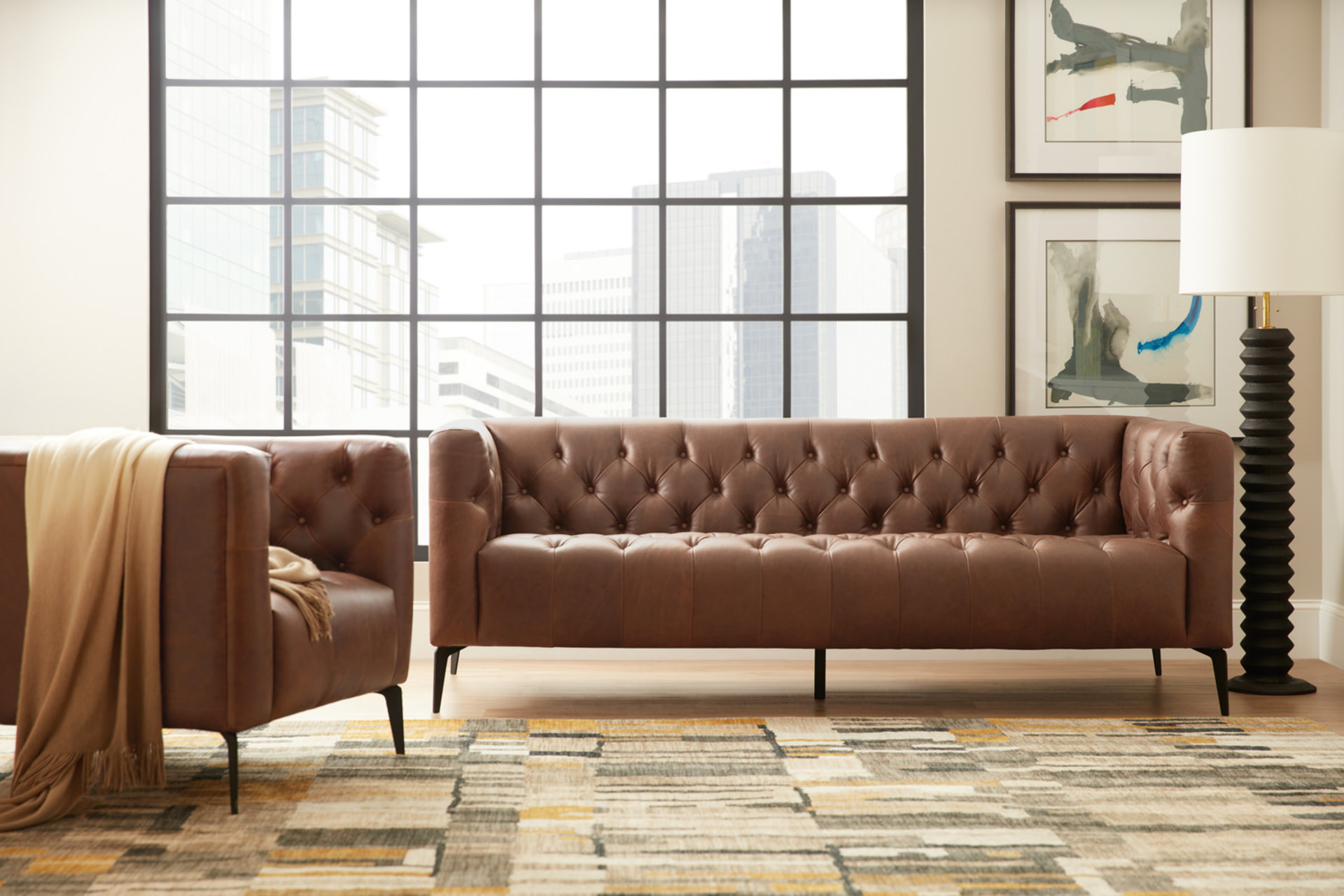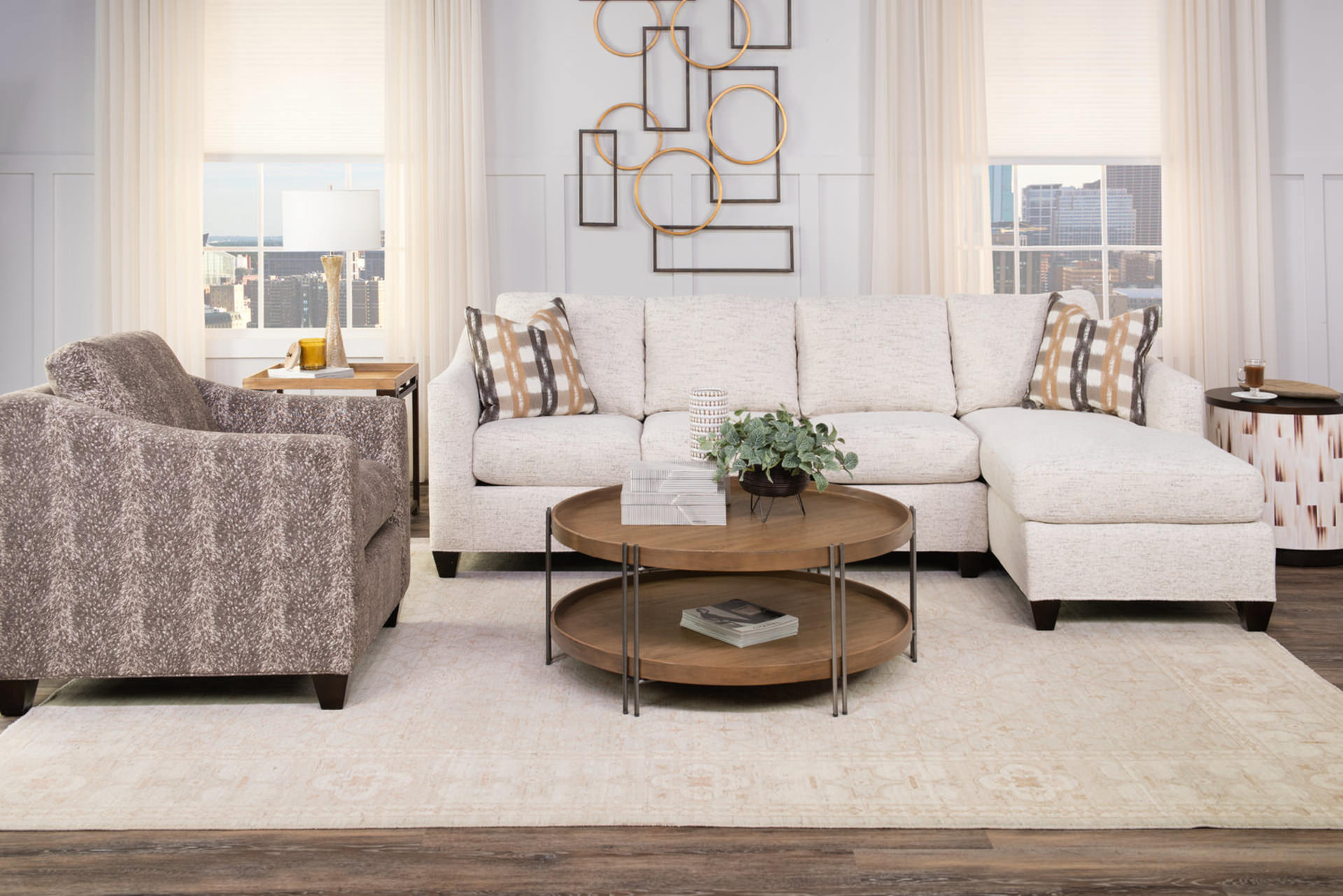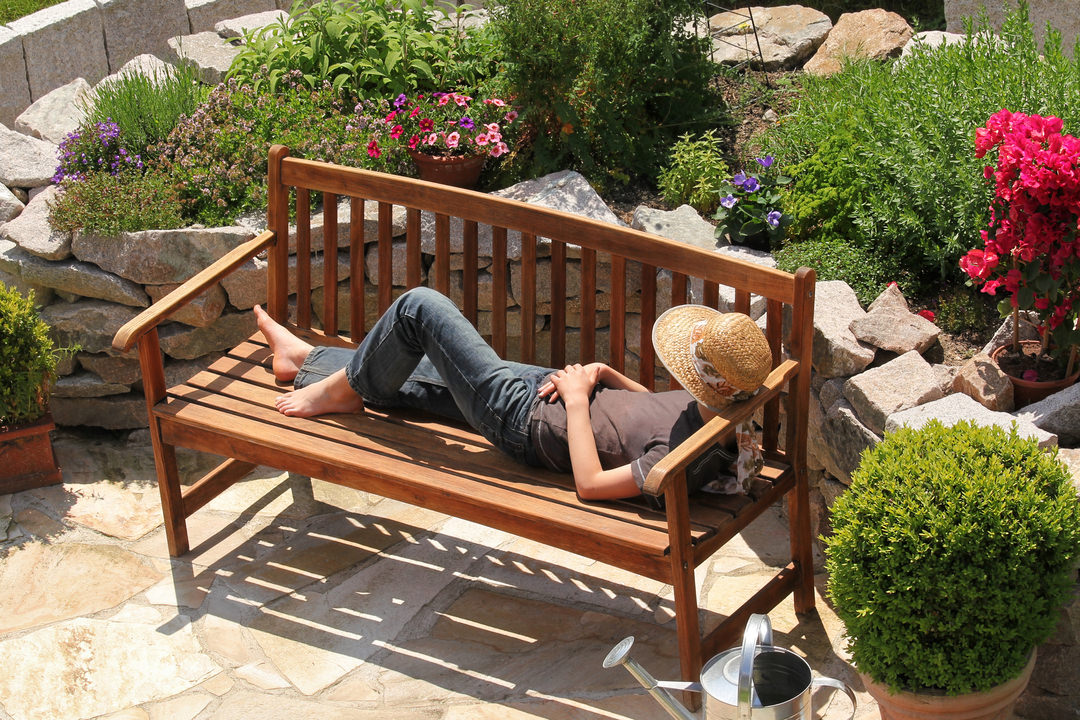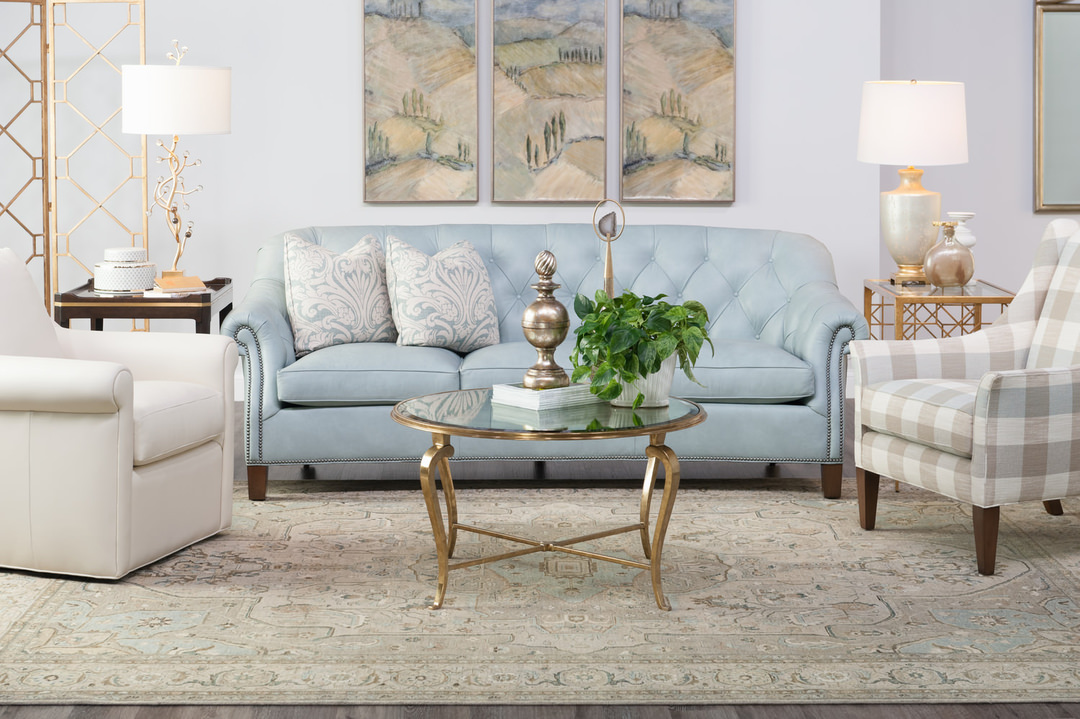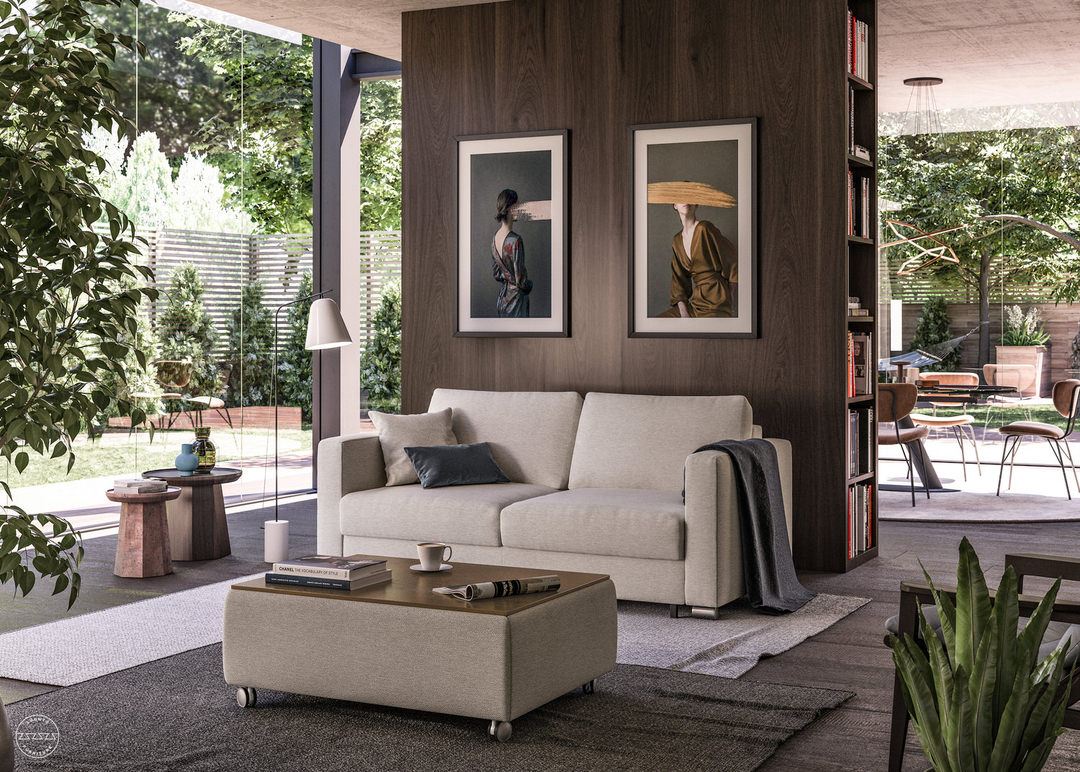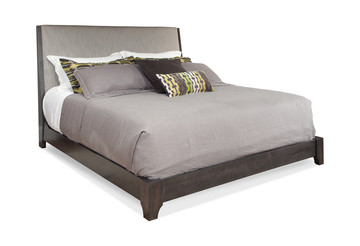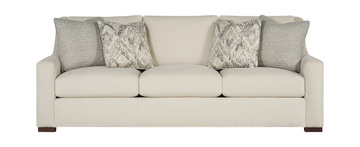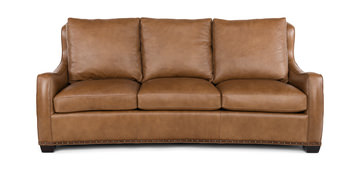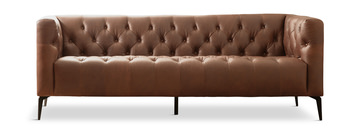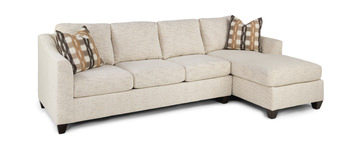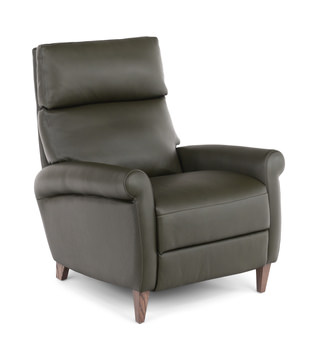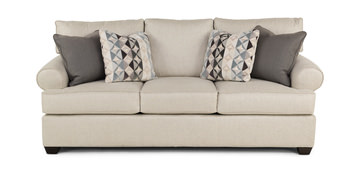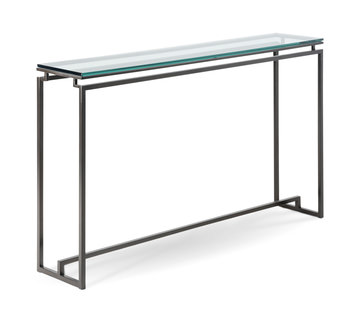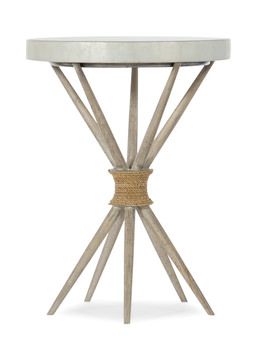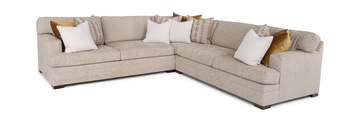Stylish and Sustainable Furniture
April 2025
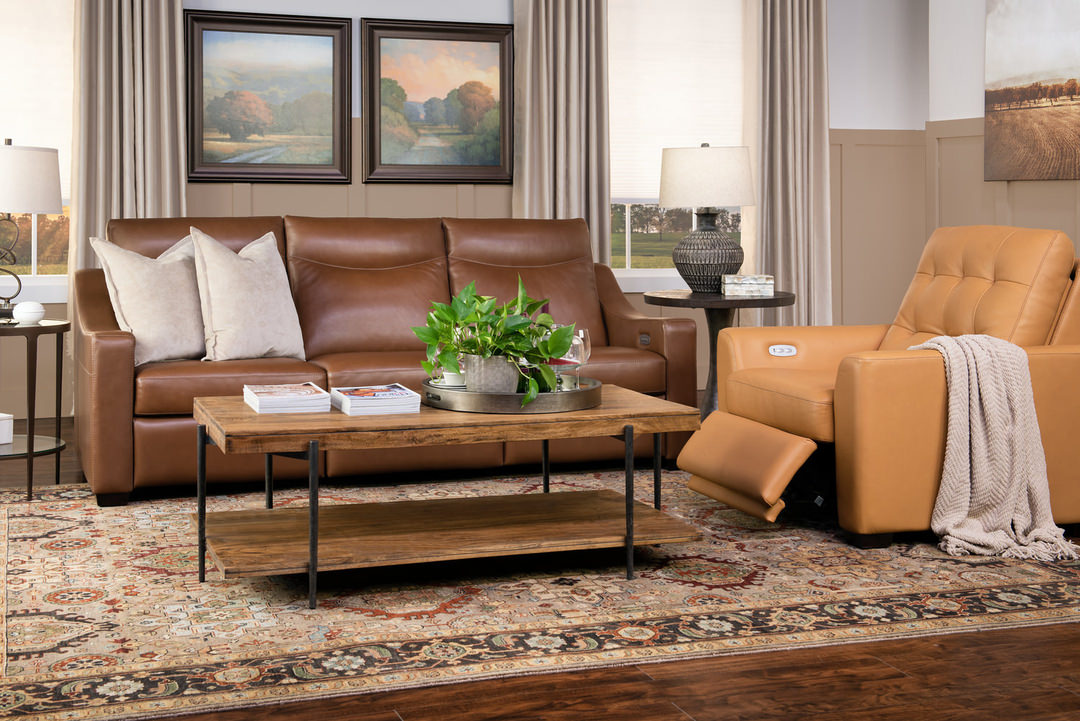
Stylish and Sustainable Furniture: A Guide to Eco-Friendly Choices
Whether you adore traditional design or lean toward contemporary styles, one factor is becoming increasingly important for today’s shoppers: sustainability. Across categories like groceries, clothing, accessories, and furniture, consumers are prioritizing eco-conscious options. Furniture is no exception. From sustainable sofas and dining sets to mattresses and area rugs, a green story adds value to any purchase.
Eco-friendly furniture has seen remarkable growth over the past two decades, fueled by millennial and Gen Z buyers. In response, top furniture manufacturers are expanding their sustainable offerings. But what makes furniture sustainable? It typically involves two key aspects: the use of eco-friendly materials and environmentally responsible manufacturing processes.
Identifying Sustainable Furniture
Understanding sustainability in furniture involves looking at materials, production methods, and certifications. Here are some ways to assess whether a piece meets eco-friendly criteria:
Key Certifications to Look For
Sustainable Furnishings Council (SFC): Recognizes companies for responsible wood sourcing through its annual Wood Furniture Scorecard.
Enhancing Furniture’s Environmental Culture (EFEC): Requires manufacturers to optimize resource use and reduce waste.
Forest Stewardship Council (FSC): Ensures wood products meet stringent sustainability and ethical standards.
Choosing Sustainable Materials
Sustainable furniture often incorporates materials that reduce environmental impact:
FSC-Certified Wood: Ensures responsible forestry practices.
Reclaimed Wood: Made from recycled timber, offering durability and unique character.
Bamboo: Responsibly sourced bamboo is a fast-growing, renewable resource gaining popularity for its aesthetics and sustainability.
Reclaimed wood furniture, in particular, offers a timeless appeal. Each piece tells a story, making it both environmentally friendly and one-of-a-kind.
Durability: A Core Aspect of Sustainability
Longevity is a crucial part of sustainability. High-quality, durable furniture reduces waste and minimizes the need for frequent replacements. Opting for heirloom-quality pieces not only benefits the environment but also saves money in the long run.
Furniture Companies with Green Stories
Many top furniture companies are leading the way in eco-friendly practices, offering stylish, sustainable options. Here’s a quick look at some of the most eco-conscious brands:
American Leather
Known for modern, U.S.-made leather furniture, American Leather combines sleek designs with environmentally friendly practices.
U.S.-made products, reducing carbon footprint
Sustainable wood frames with minimal scrap
Water-based leather pigments and recyclable leather scraps
Soy-based, fire-retardant-free foam
Bernhardt & Bernhardt Interiors
With over 130 years in the furniture industry, Bernhardt is dedicated to sustainability through community and environmental partnerships.
EFEC certification at five U.S. facilities
Partnerships with environmental organizations (SFI, FSC, GREENGUARD)
Bradington Young
This brand focuses on being an environmental steward by minimizing waste and using sustainable materials.
Leather scraps resold to minimize waste
Recycled cardboard packaging and repurposed wood waste
Pallets reused, recycled, or repurposed
Classic Home
Known for combining traditional craftsmanship with modern sustainability, Classic Home emphasizes FSC-certified and repurposed materials.
Many FSC-certified products
Plantation-grown and repurposed woods
Water from production reused in local agriculture
Use of water-based wood sealers
Century
A founding member of the SFC, Century focuses on sustainable practices across its operations.
FSC, SFI, and EFEC certifications; Partnership with Rainforest Alliance
Over 50% of wood sourced in the U.S.
Fiber from recycled materials and soy-based cushions
Low VOC finishes and lacquers with high solids content
Metal components contain a significant amount of recycled material
Charleston Forge
Specializing in custom metal and sustainable wood furniture, Charleston Forge uses recycled steel and sustainable wood from USDA-certified forests.
Recycled steel and USDA-certified wood
90% of suppliers within 100 miles of their factory
Dinec
Dinec is committed to using non-polluting machinery and sustainable hardwood in their durable, heirloom-quality furniture.
Sustainable hardwood from certified forests
Use of non-polluting machinery and energy-efficient computer equipment
Primary energy source is hydropower
Durham Furniture
Known for building solid wood furniture that lasts generations, Durham prioritizes sustainability and ethical practices.
Lumber from replenishing North American forests
SFC member, committed to sustainable communities and ethical workplaces
Gat Creek
Gat Creek is dedicated to sustainability with raw materials sourced from local, sustainably managed forests and green manufacturing practices.
Founding member of SFC
Solar panels and LED lighting at the facility
Lumber sourced from sustainably managed, nearby Appalachian forests
Hancock & Moore
Hancock & Moore combines luxurious design with eco-friendly materials and manufacturing processes.
U.S.-sourced lumber from sustainably managed forests
Soy-based foam replaces petroleum based chemicals; Foam produced without fire-retardant chemicals
Low VOC finishes and lacquers with high solids content
Metal components contain a significant amount of recycled material
Recycled fibers used in pillow and cushion wrapping
Hooker
With a long-standing commitment to environmental responsibility, Hooker uses sustainable materials and recycles waste throughout their operations.
Member of SFC and EFEC certified
Leather scraps resold
Cardboard packaging is recycled and wood waste is repurposed for use in the farming industry
Environmental education program for the local youth in the community
Huntington House
A pioneer in sustainable practices, Huntington House continues to innovate with eco-friendly materials and recycling initiatives.
Focus on sourcing materials locally first, domestically second, and internationally last
Stringent recycling policies
Seat cushions and foam padding contain preserve foam (20% soy based, and fiber wrap is made from 80% regenerated fiber)
Springs and strapping from 98% recycled steel and finishes are water-based
Packaging from 100% recycled cardboard
Jessica Charles
Jessica Charles produces high-quality furniture using sustainable practices, ensuring minimal environmental impact.
95% U.S.-sourced lumber; all lumber must be certified as to the legality of their harvest
Hightest possible content of soy oil in cushions and poly foam; foam produced without use of fire-retardant chemicals
Low VOC finishes and lacquers have a high solids content
Recycled fibers used in pillow and cushion wrapping
Luonto (Finland)
Based in Finland, Luonto is committed to sustainability, a core value deeply rooted in the country’s environmental heritage.
Heritage and cultural emphasis on a healthy environment drives sustainable practices. Philosophy of “it’s done simply because it’s who we are and where we’re from”
Numerous certifications include PEFC, FSC, CertiPUR-EU, Oeko-Tex Standard 100, REACH compliance, Global Recycled Standard, Aqua Clean, PFC Free, and Safefront Hygiene Protector
Lumber from strictly managed sustainable forests in Finland
Furniture built to be repairable
R-PES upholstery collection made from 100% recycled bottles
Zero wood waste
Precedent Furniture
Precedent follows green initiatives by sourcing sustainable wood and using eco-friendly materials in manufacturing.
U.S. sourced wood certified by the SFI
Frames contain very low amounts of formaldehyde
Cushions are 20% BIOH Polyol
Polyester padding is 80% to 100% recycled material
All metal parts are produced from a minimum of 95% recycled steel.
Water-based, formaldehyde-free glues
Packaging and shipping materials are 100% recyclable
Sherrill Furniture
Sherrill Furniture places a strong emphasis on using sustainable materials and minimizing its environmental footprint in production.
Sourced components meet sustainability standards; TSCA Title VI compliant lumber, Foam products meet TB117-2013 standard
Reduced energy and water consumption in manufacturing
Trend Point
Trend Point creates long-lasting furniture using sustainable practices and recycled materials. They are committed to creating a culture that goes beyond basic regulatory requirements.
Reduced water, energy, and chemicals in leather production
Water-based adhesives
Flame-retardant free fabrics, plastics, and foam
Utilization of ethically sourced and recycled materials
Certi-PUR certified foam
Rowe
Rowe specializes in eco-friendly manufacturing processes, including the use of sustainable materials for cushions, fabrics, and wood.
Natural and renewable fibers, wood from replenished, domestic forests
Eco-friendly materials included 100% recycled paperboard for arm cardboard, down cushion filler made from recycled plastic bottles, springs made from recycled iron ore, uncoated nails and screws, recycled cotton, and recycled fibers
Cushions partially produced with Polyol plant-based chemicals
Fire-retardant-free foam
Trica
Trica focuses on reducing environmental impact by using recyclable metals and non-toxic paints.
Recycled and recyclable steel, aluminum, and plastics
VOC- and lead-free paints
Vanguard
Vanguard emphasizes energy efficiency and recycling, with solar-powered facilities and eco-friendly fabrics.
Solar-powered facilities
Significant waste recycling within Vanguard
FSC-certified case goods and eco-friendly fabrics from natural fibers or recycled polyester blends
Why Sustainable Furniture Matters
With brands like these leading the way, finding stylish, sustainable furniture has never been easier. By choosing pieces that align with eco-friendly values, you’re not only enhancing your home but also contributing to a healthier planet. Visit a showroom or consult a designer to explore options and discover how green practices can meet your style needs.
